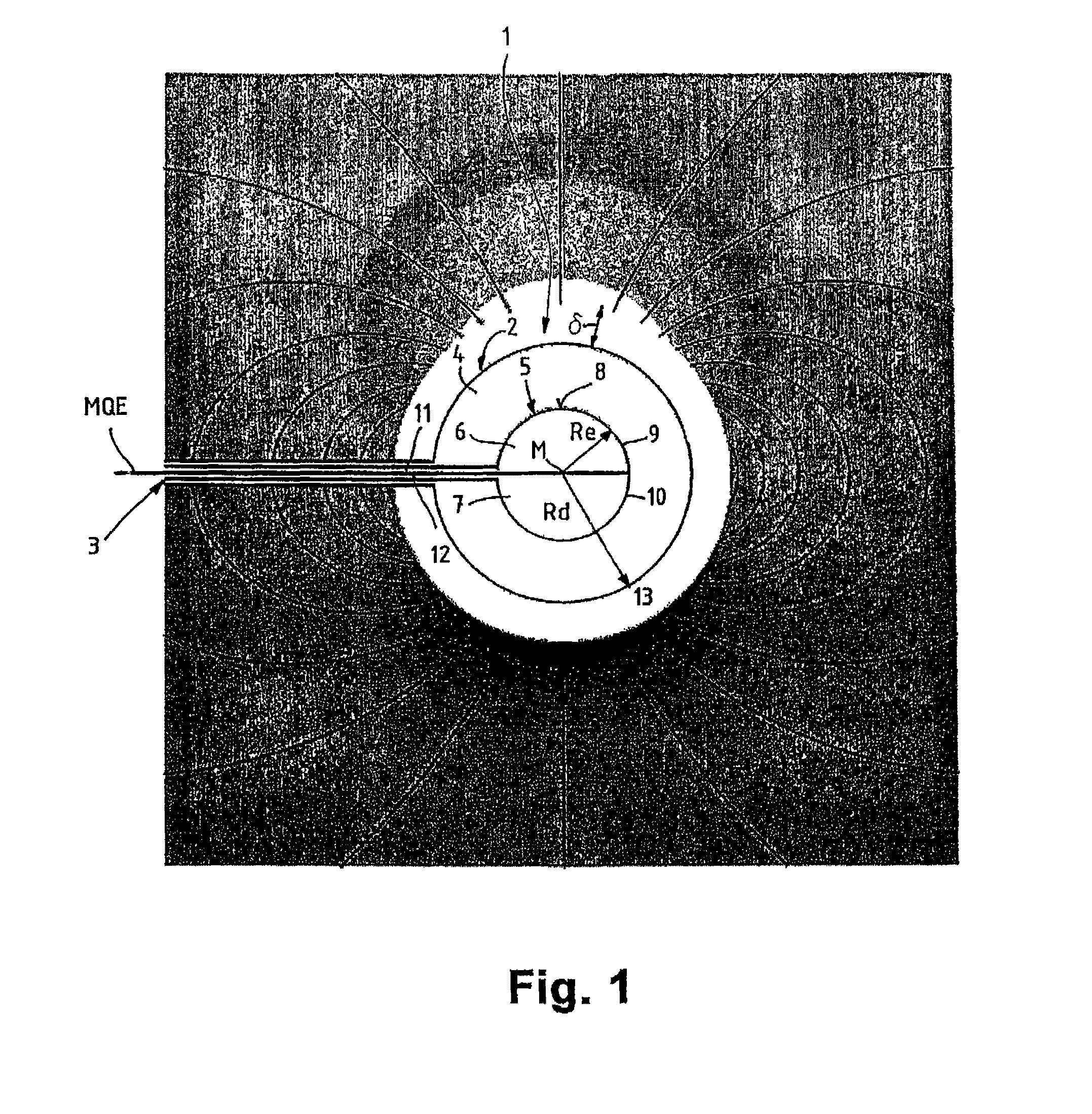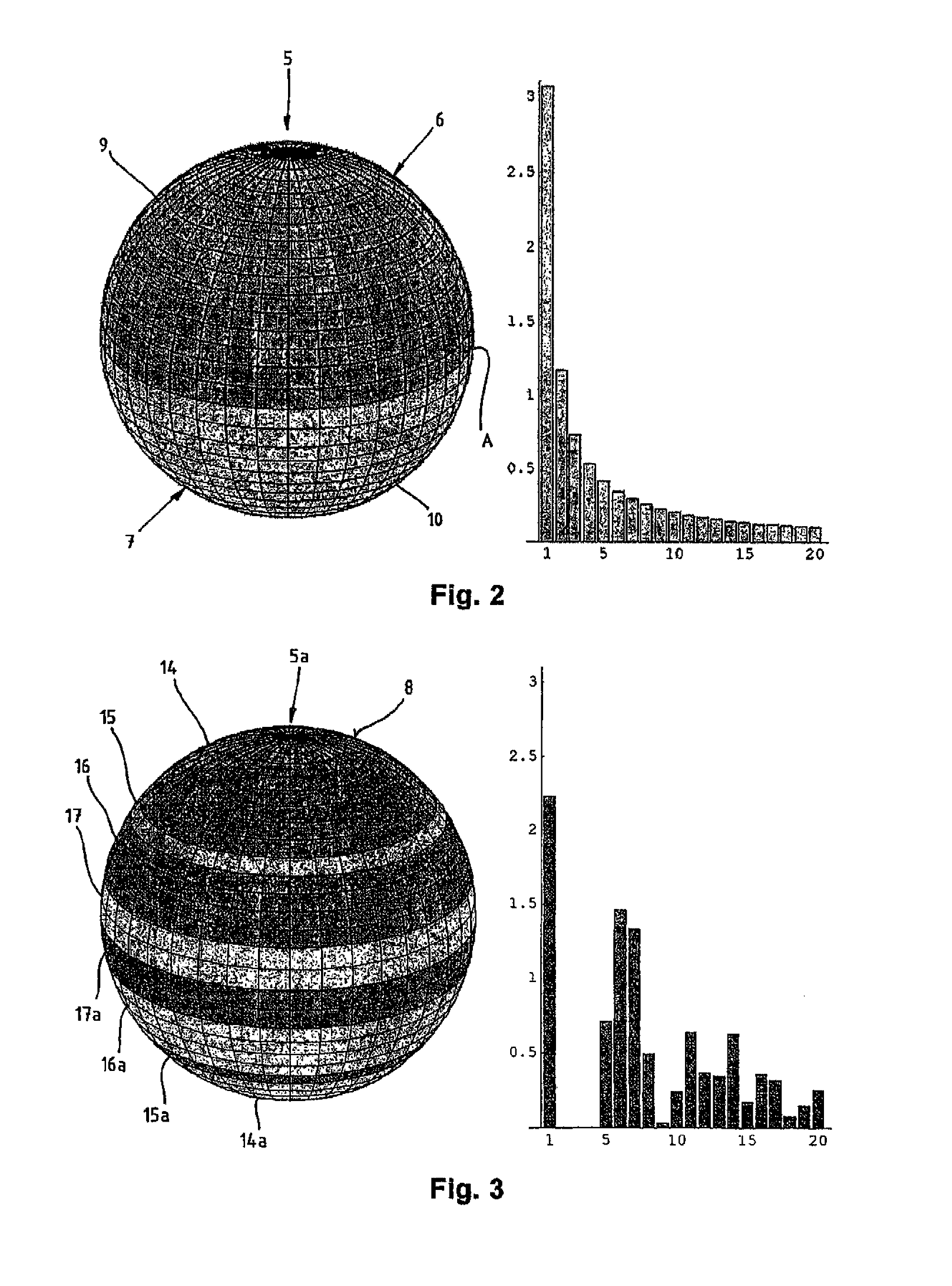Apparatus and use of the apparatus for the determination of the density of a plasma
a technology of apparatus and density, applied in the direction of instruments, specific gravity using flow properties, measurement devices, etc., can solve the problems of difficult determination of electron density, small investment and maintenance requirements, and few industry-compatible products, and achieve high accuracy and robust measurement methods.
- Summary
- Abstract
- Description
- Claims
- Application Information
AI Technical Summary
Benefits of technology
Problems solved by technology
Method used
Image
Examples
Embodiment Construction
[0046]FIG. 1 shows the probe 1 as part of a device (not shown in detail) for measuring the electron density of a plasma. The probe 1 includes a spherical probe head 2 connected to a slim handle 3. FIG. 1 shows the configuration of probe 1 in a purely schematically drawing to illustrate the concept of the invention. All dimensions of FIG. 1 are chosen arbitrarily and are only meant to illustrate the concept of the invention.
[0047]The core of the probe 1 is the probe head 2 which consists of two shells. An outer sheath 4 of constant wall thickness surrounds a spherical probe core 5. The radii of the probe core and the sheath are denoted with Re und Rd, respectively. The probe core 5 includes two electrodes 6, 7, which are arranged symmetrically with respect to a plane MQE extending through the center M of the probe core 5, so that the surface 8 of the probe core 5 has electrode areas 9, 10 of opposite polarity. The electrodes 6, 7 are connected via the lines 11, 12 to a high-frequency...
PUM
| Property | Measurement | Unit |
|---|---|---|
| density | aaaaa | aaaaa |
| polarity | aaaaa | aaaaa |
| resonance frequency | aaaaa | aaaaa |
Abstract
Description
Claims
Application Information
 Login to View More
Login to View More - R&D
- Intellectual Property
- Life Sciences
- Materials
- Tech Scout
- Unparalleled Data Quality
- Higher Quality Content
- 60% Fewer Hallucinations
Browse by: Latest US Patents, China's latest patents, Technical Efficacy Thesaurus, Application Domain, Technology Topic, Popular Technical Reports.
© 2025 PatSnap. All rights reserved.Legal|Privacy policy|Modern Slavery Act Transparency Statement|Sitemap|About US| Contact US: help@patsnap.com



